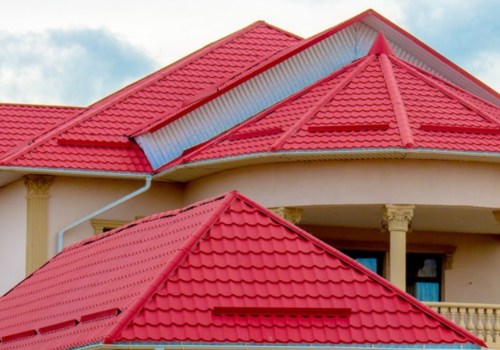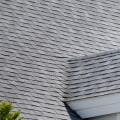Roofing felt is a compact wool fiber and is made of condensed glass fiber or polyester fibers. Although Roofing Felt is the protective layer, it can get wet. Fortunately, roofing felt can get wet and still maintain its integrity. However, because it is designed to repel water and not absorb it, it can break down if it stays damp for too long, so you need to have time to dry.
Too much sunlight can also cause the roofing felt to break, so it is not very suitable for very humid or very dry climates. However, you don't want to leave it exposed to the elements for more than a few days or it could get damaged. The good news is that roofing felt can get wet. Behmer Roofing & Sheet Metal explains that this is an essential part of roofing felt design in the first place.
This felt is designed to add another layer of waterproofing to your roof to protect your home from damage caused by rain, snow and moisture. Roofing felt, also known as tar paper or underlayment, is used to protect your roof from perception. Getting wet is not a problem in small doses. However, prolonged exposure, longer than three days, can compromise the roofing felt and cause it to crumple or break.
Although the felt ensures that water drains from the roof, it can still get wet. However, even after being wet, the felt maintains its integrity, but only if it is not exposed to other elements for a few days. For example, exposure to sunlight and more rain will cause it to break down. Yes, roofing felt can get wet.
Although roofing felt is an additional protective layer, it can still get wet. Perhaps, even when wet, roofing felt maintains its integrity until it is exposed to other elements for more than a week or so. It can even break down in sunlight due to the amount of moisture. So, yes, the base of the roof can get wet.
But not for long periods of time. That is why planning is so important during the installation of a roof. During clear 70-degree days we have more flexibility in our schedule. However, when the rainy season arrives, we make sure to work quickly, efficiently and safely.
Roofing felt can get wet while maintaining its integrity. It is possible if you do not allow the elements to be exposed for more than a week. Roofing felt decomposes in sunlight due to huge amounts of continuous moisture. The base, flashings and shingles work together and must be installed in the correct order to prevent the roofing felt from getting wet.
In extremely cold weather, ice and snow on the roof can melt due to the heat emitted by the house. You should not install shingles on damp or wet roofs because trapped moisture will not evaporate when the sun warms the shingles. However, the water-resistant properties of roofing felt are limited and temporary; therefore, they can get wet quickly. The most commonly used felts are the thickest ones, which come in rolls that are 3 feet wide and 30 pounds in weight because they protect the roof from water leaks longer and more efficiently.
As a protective layer between deck and shingles, roofing felt is excellent for structural integrity and protects against leakage and rot. Essentially, the structure of a roof with felt will be first the shingles on top, secondly the felt, and then, thirdly, the felt on top of the structure itself. Everything on your roof is there to prevent it from entering the outside (rainwater, debris, etc.). If you are installing shingles all over your roof, it may take a few days; typically in the United States, residential homes have roofs that span between 1,600 and 1,700 square feet.
The roofing felt is designed to repel water, but the homeowner still needs to install the roofing felt correctly following the installation guidelines and instructions of the professionals. The wrinkles and bubbles that form in the felt tend to create heat pockets that damage the shingles over time, while tears compromise the ability of the felt to protect the roof. The service life of a torch felt roof is about 15 to 25 years, depending on the extensive weather conditions experienced by the area. You don't want to be sitting on your shattered roof while watching YouTube tutorials and wondering what to do next.
Roofing felt serves to add an extra layer of protection between shingles and plywood and create a temporary moisture barrier until all shingles are in place. The roofing felt is laid in this way so as not to withstand the brunt of the weather outside, but to absorb and then release any water that manages to make its way under the shingles. Certainly the cream of the crop, the water protection Ice & will keep your roof safe from water, whether it is frozen or not, however, you will have to pay for that protection. The service life of roofing felt will depend on the type and weight of the product used, as well as the climate and temperatures experienced by the area.
. .








Leave Reply